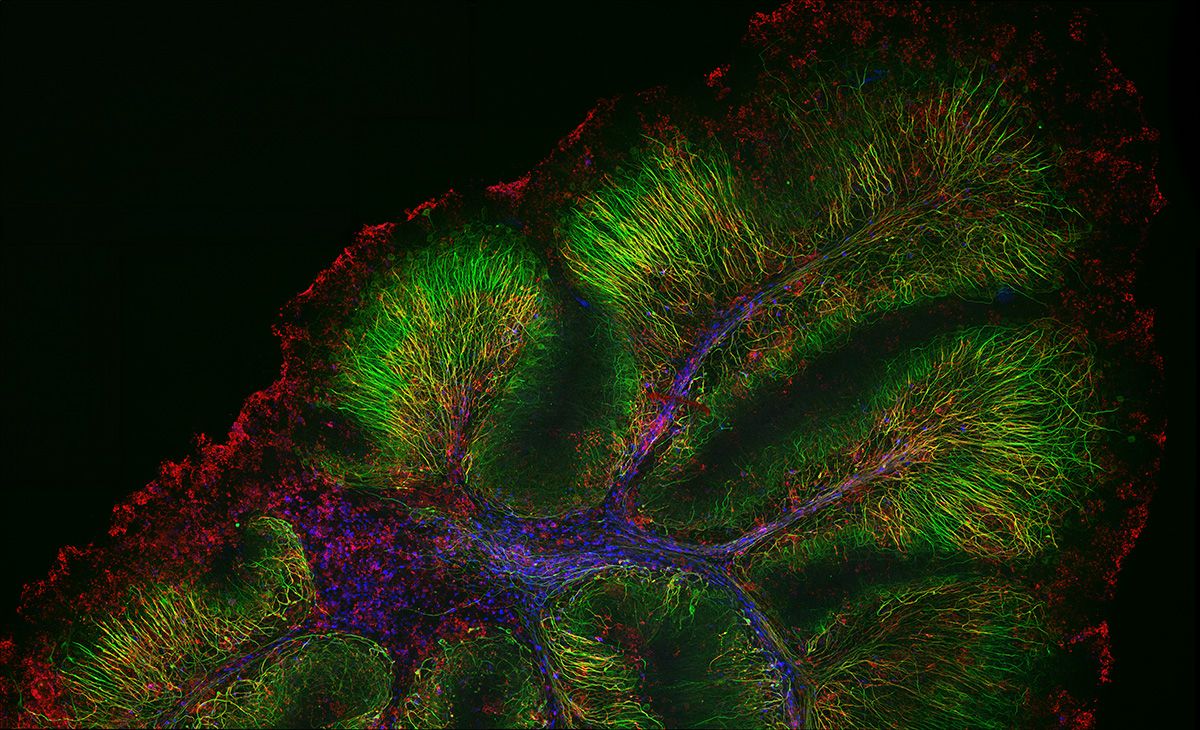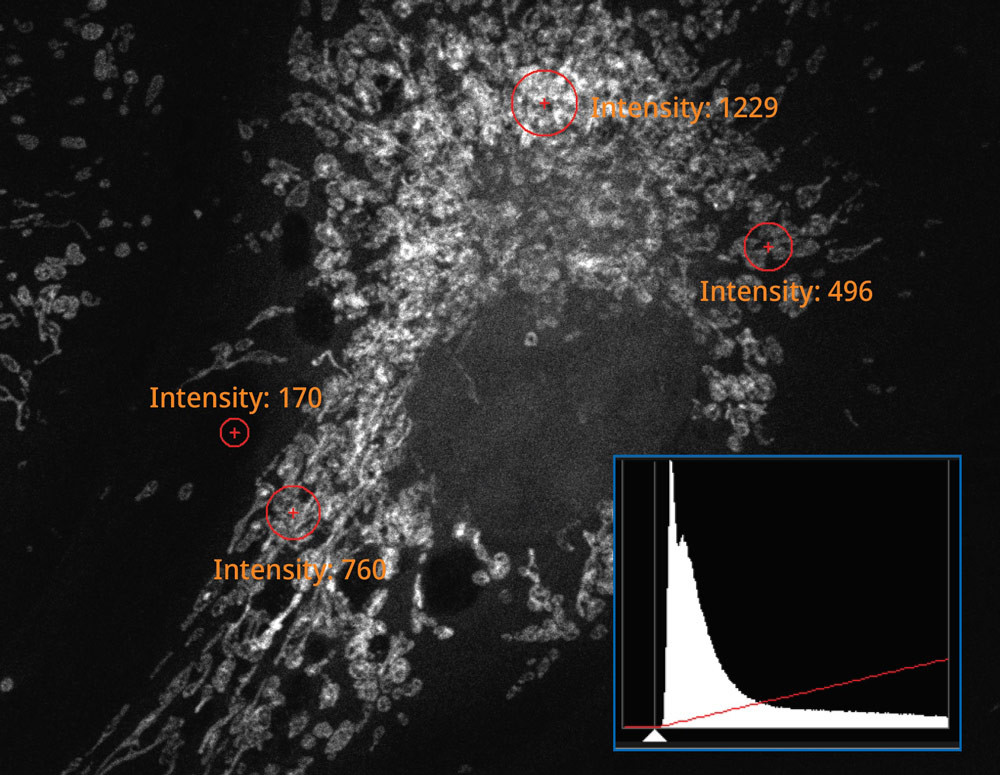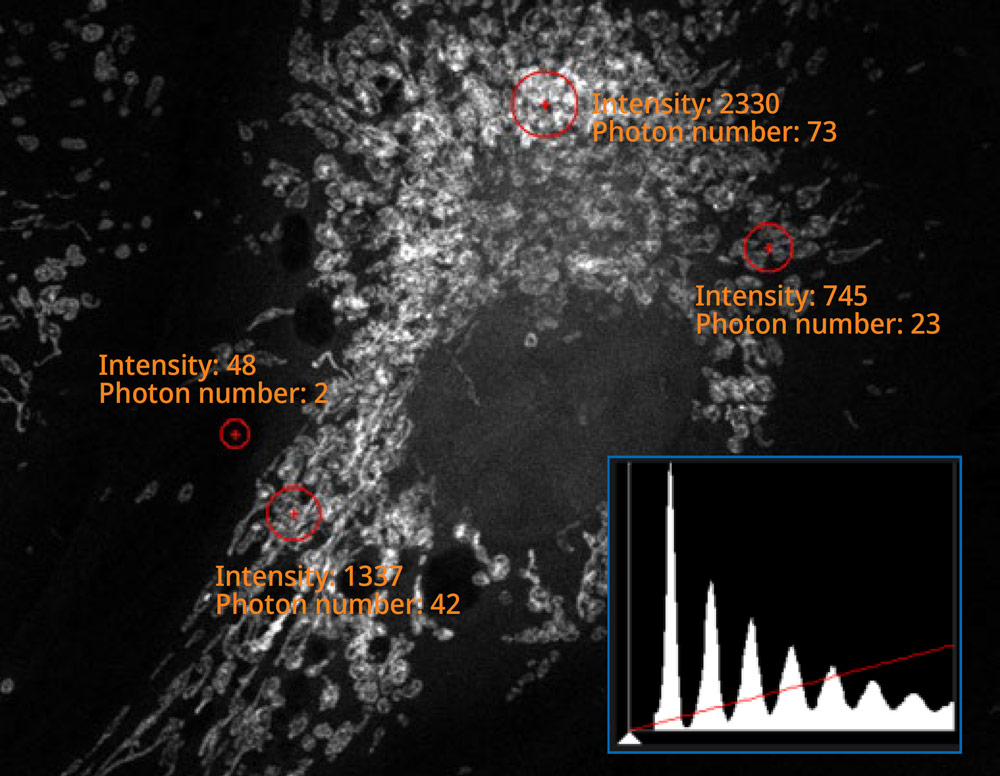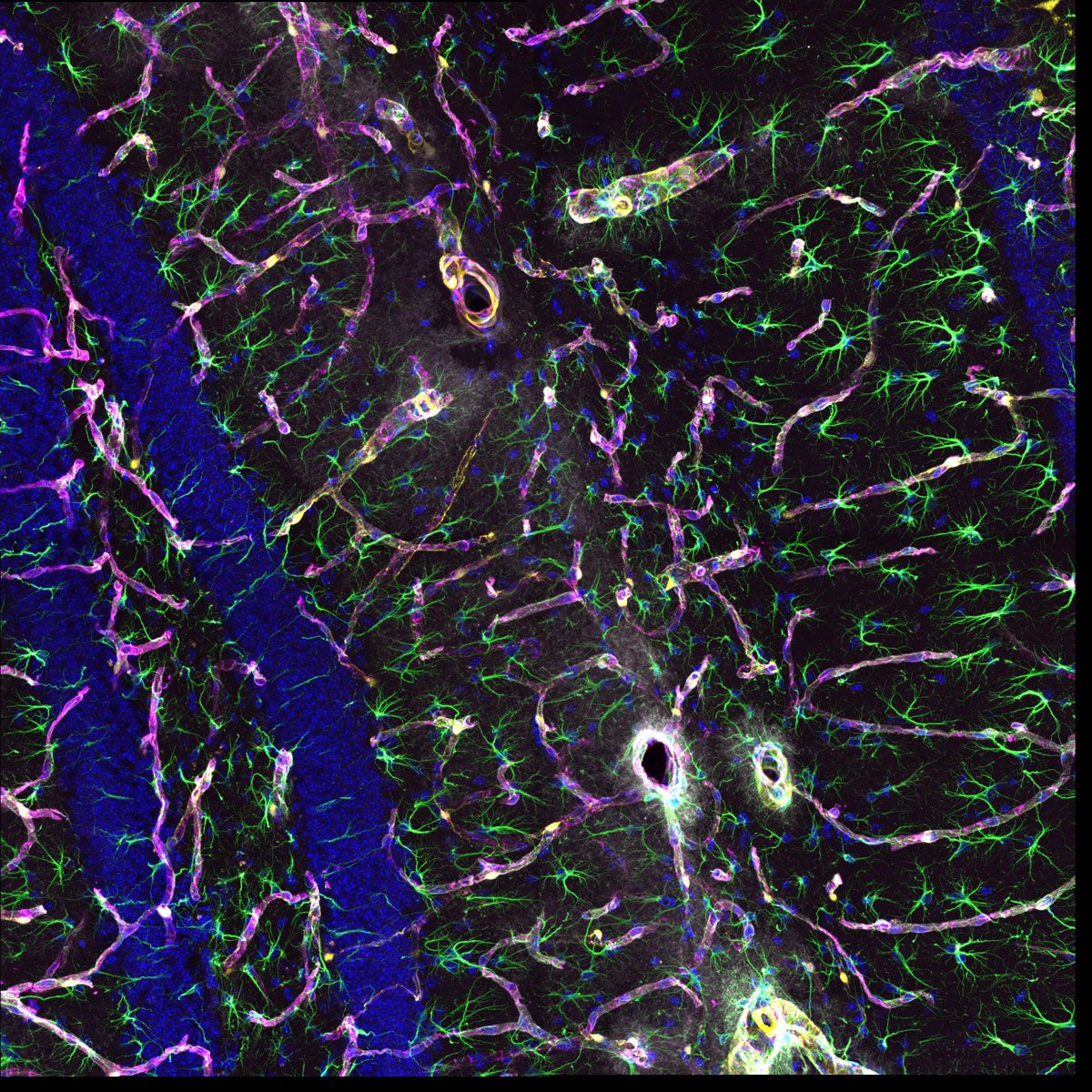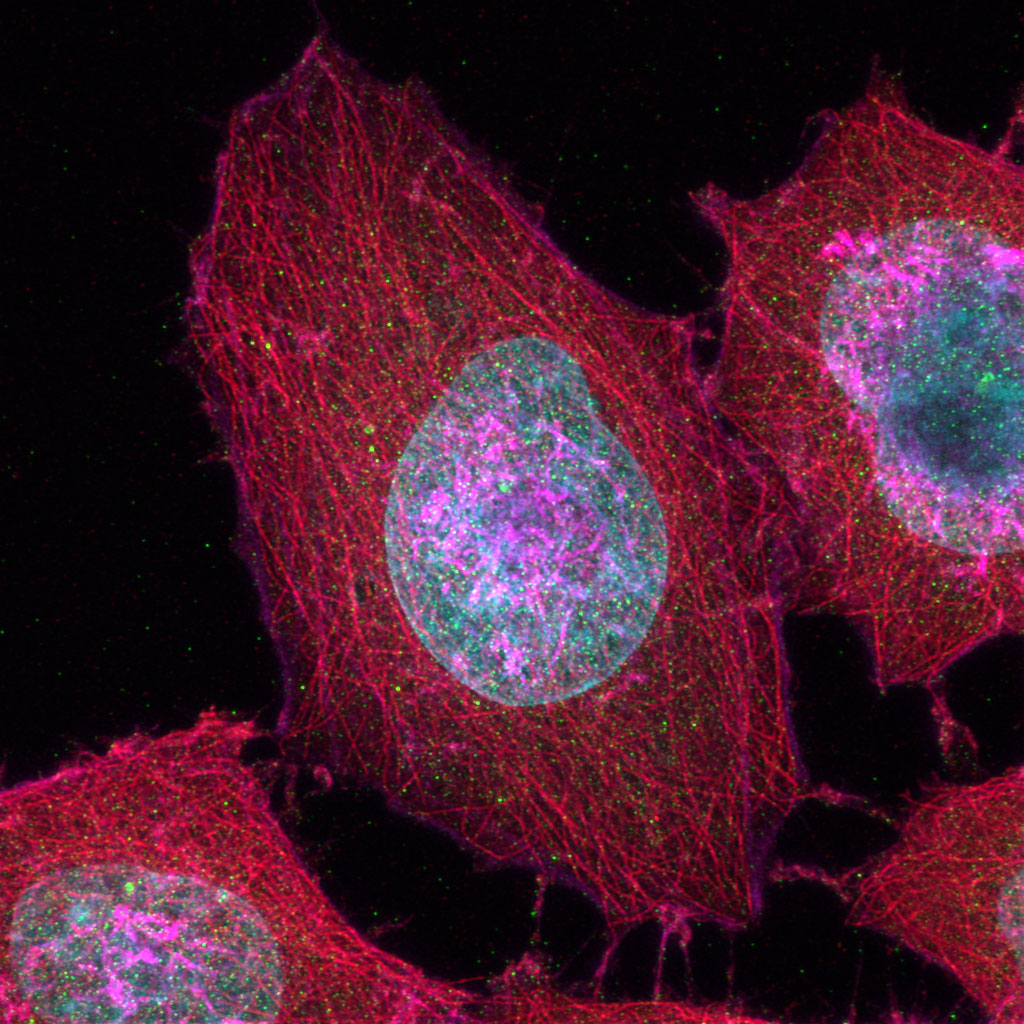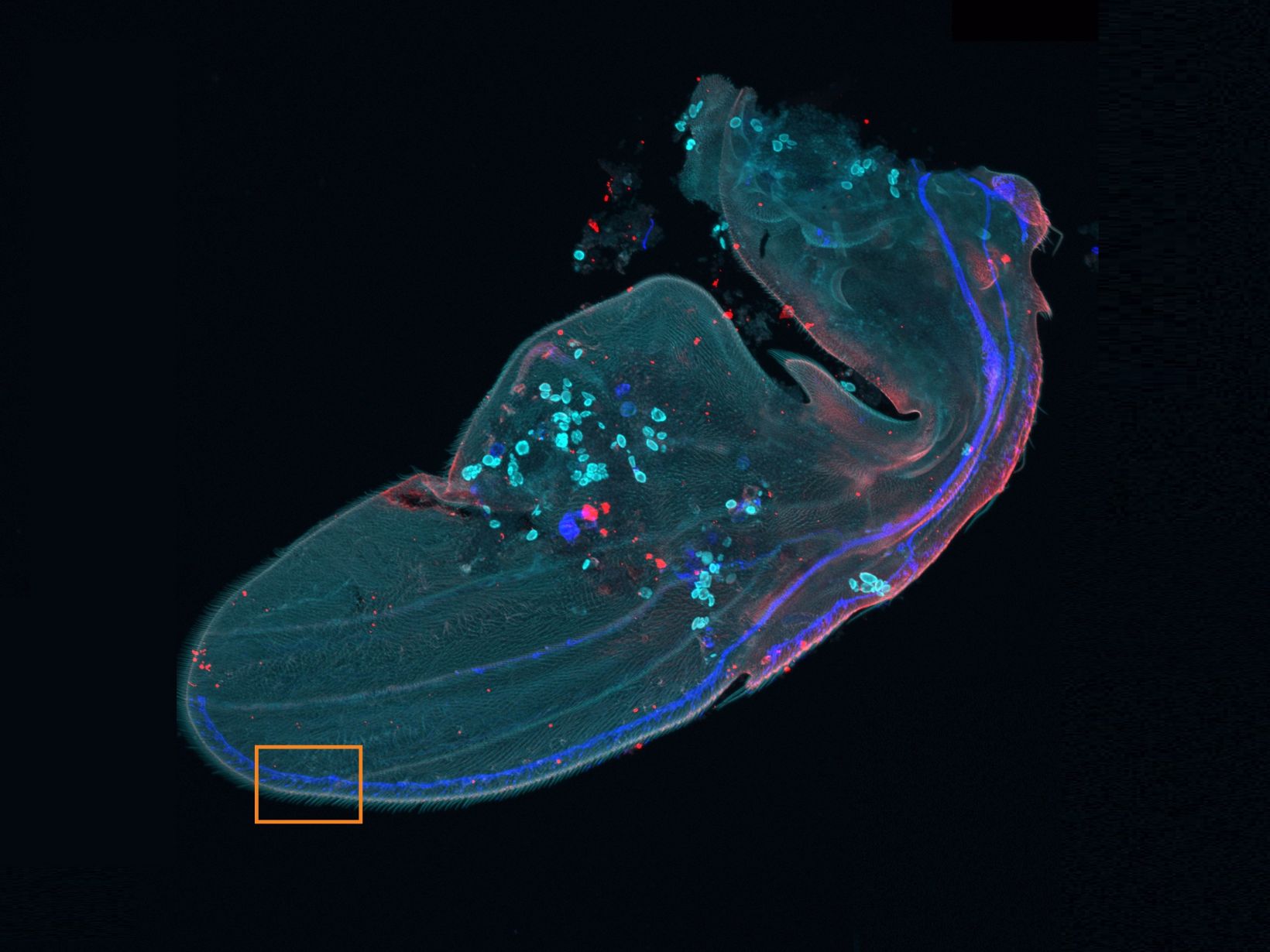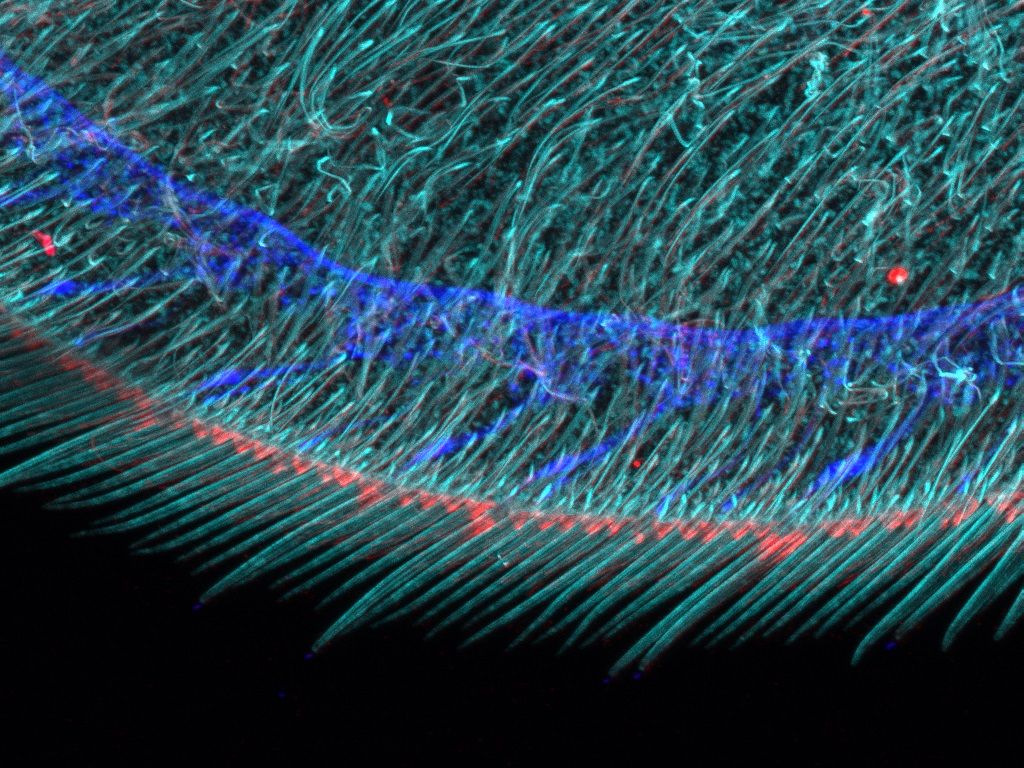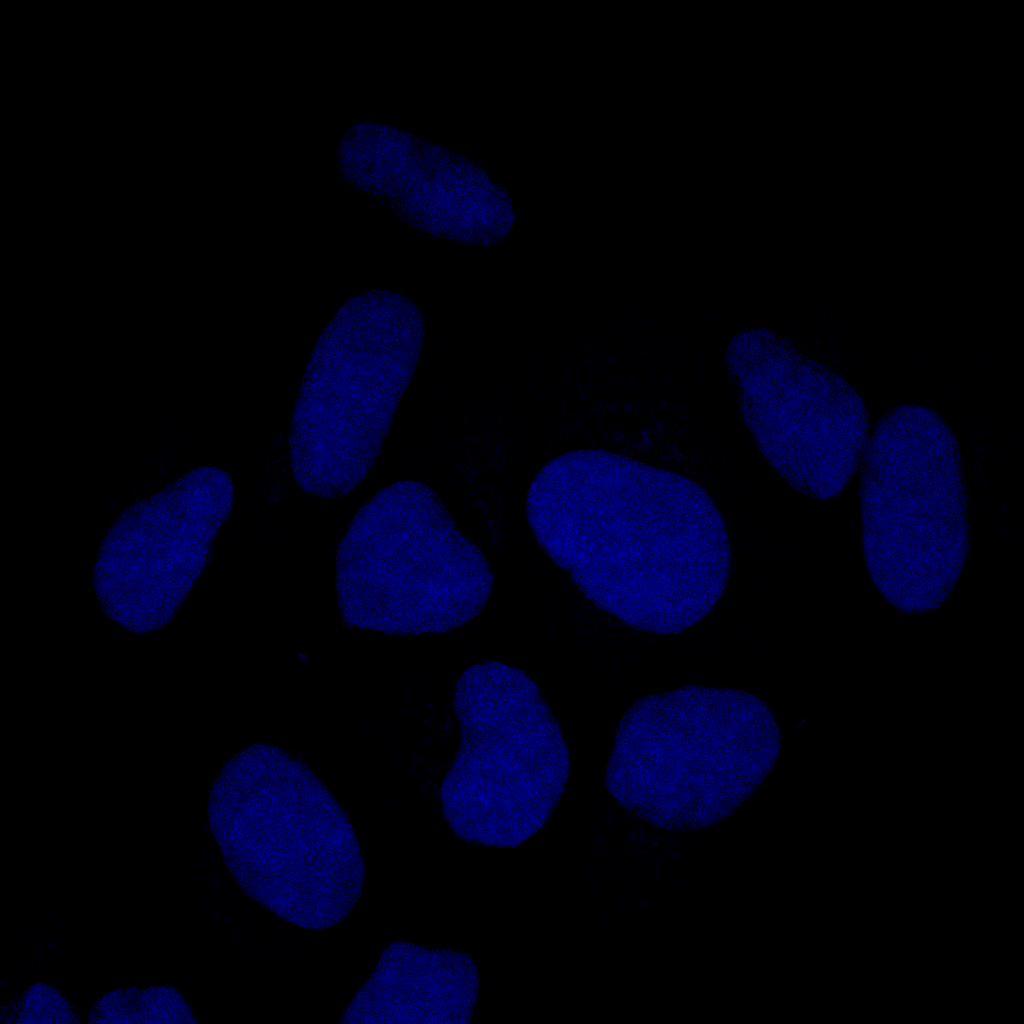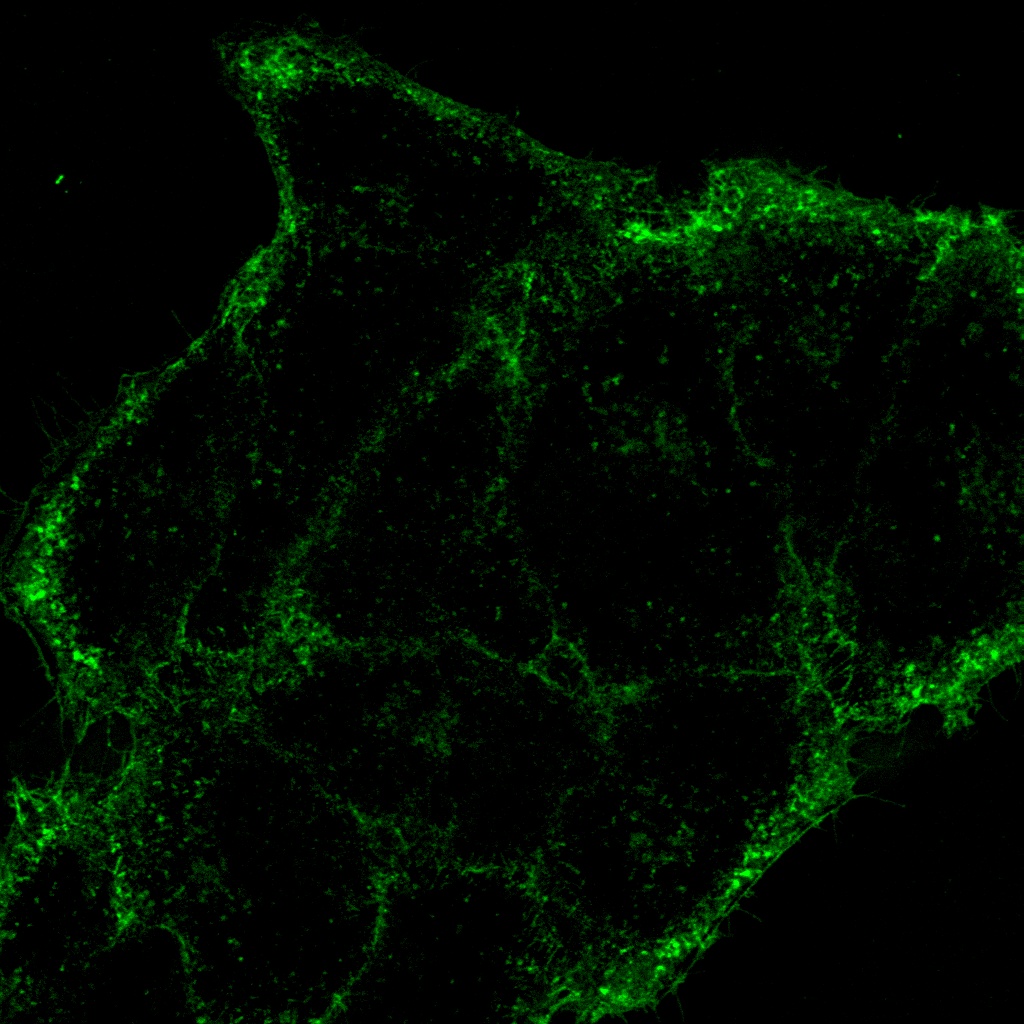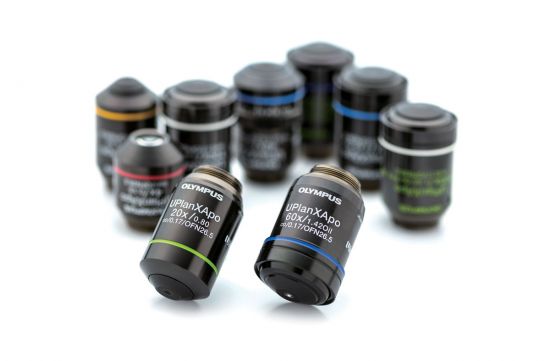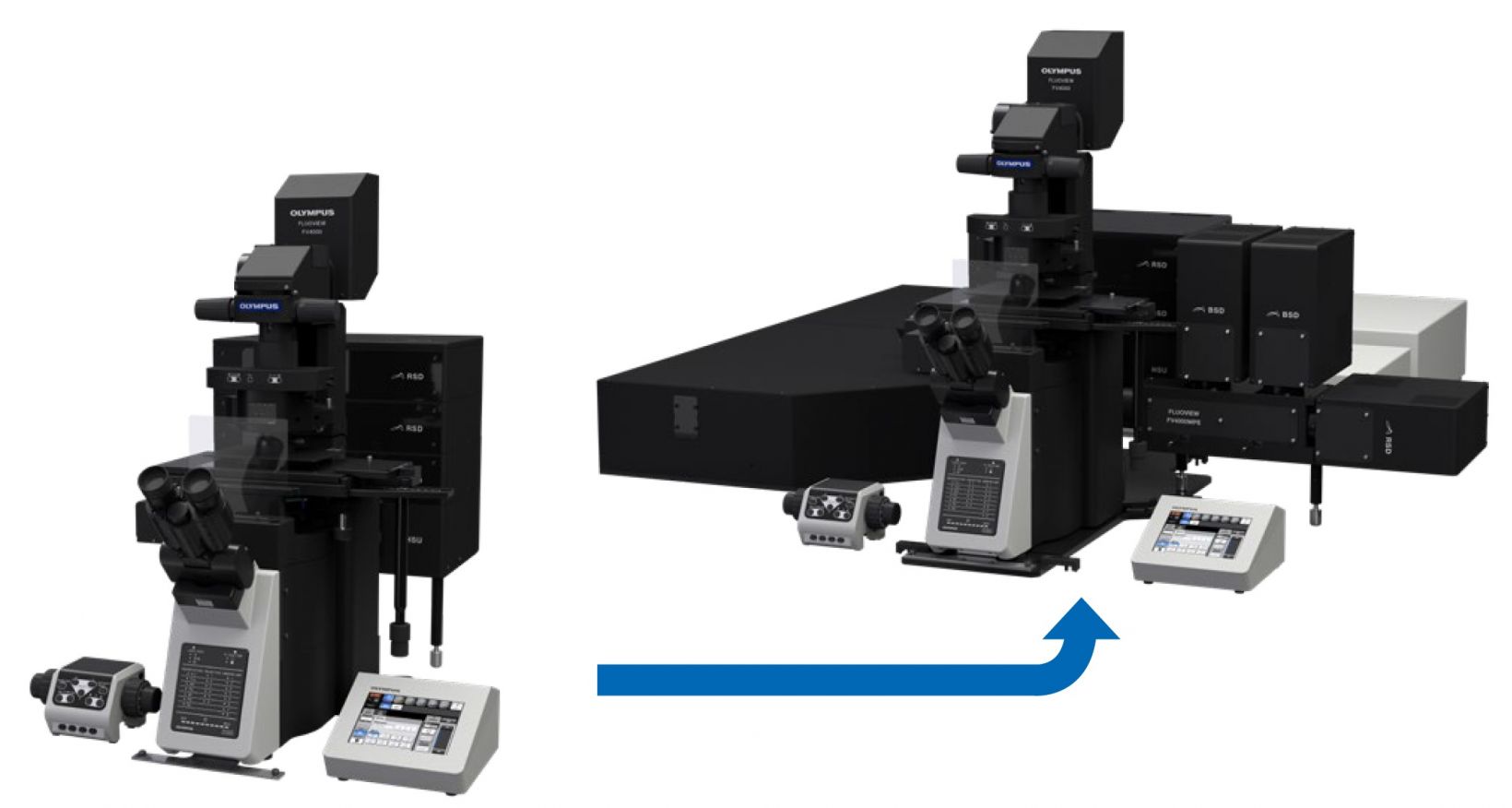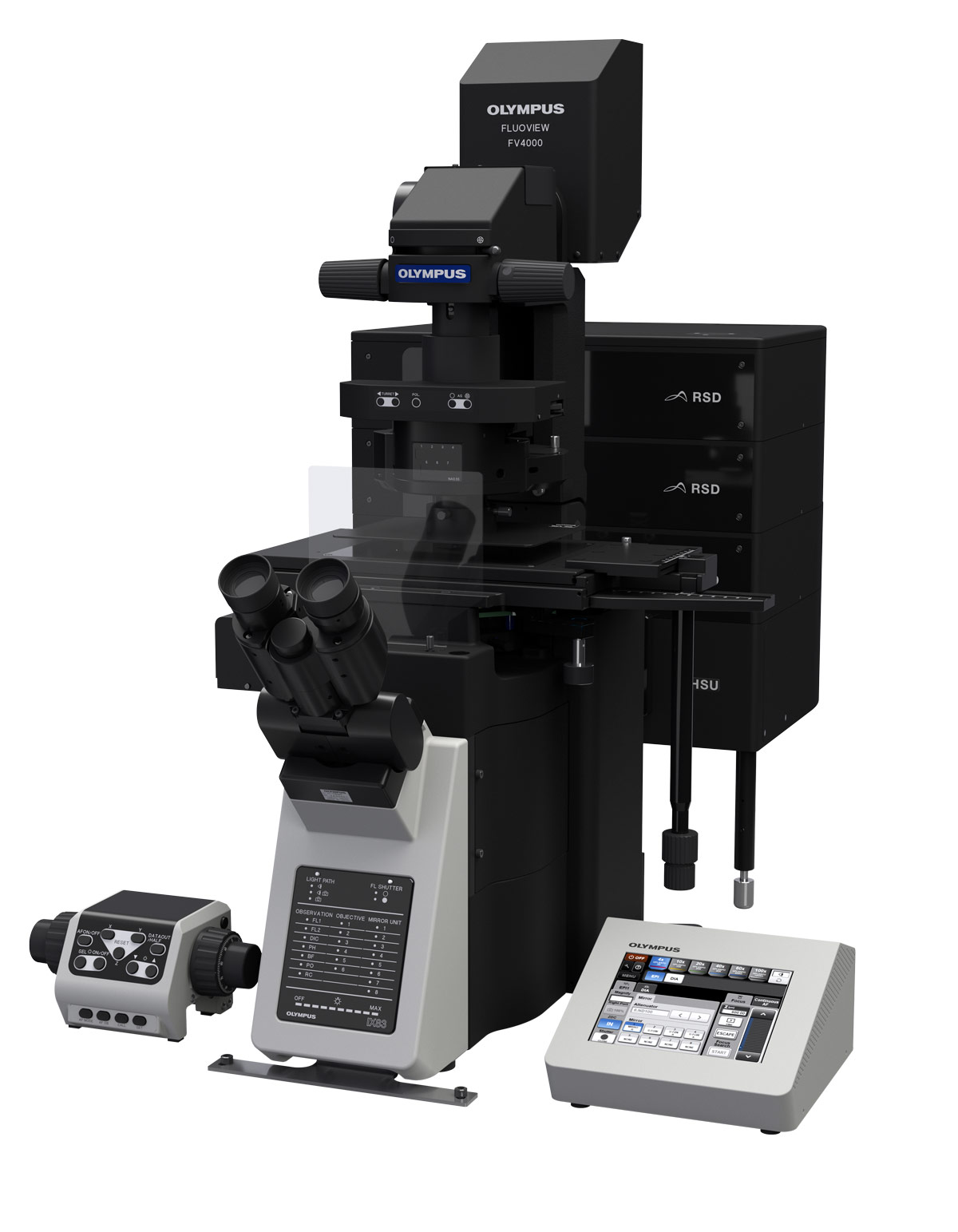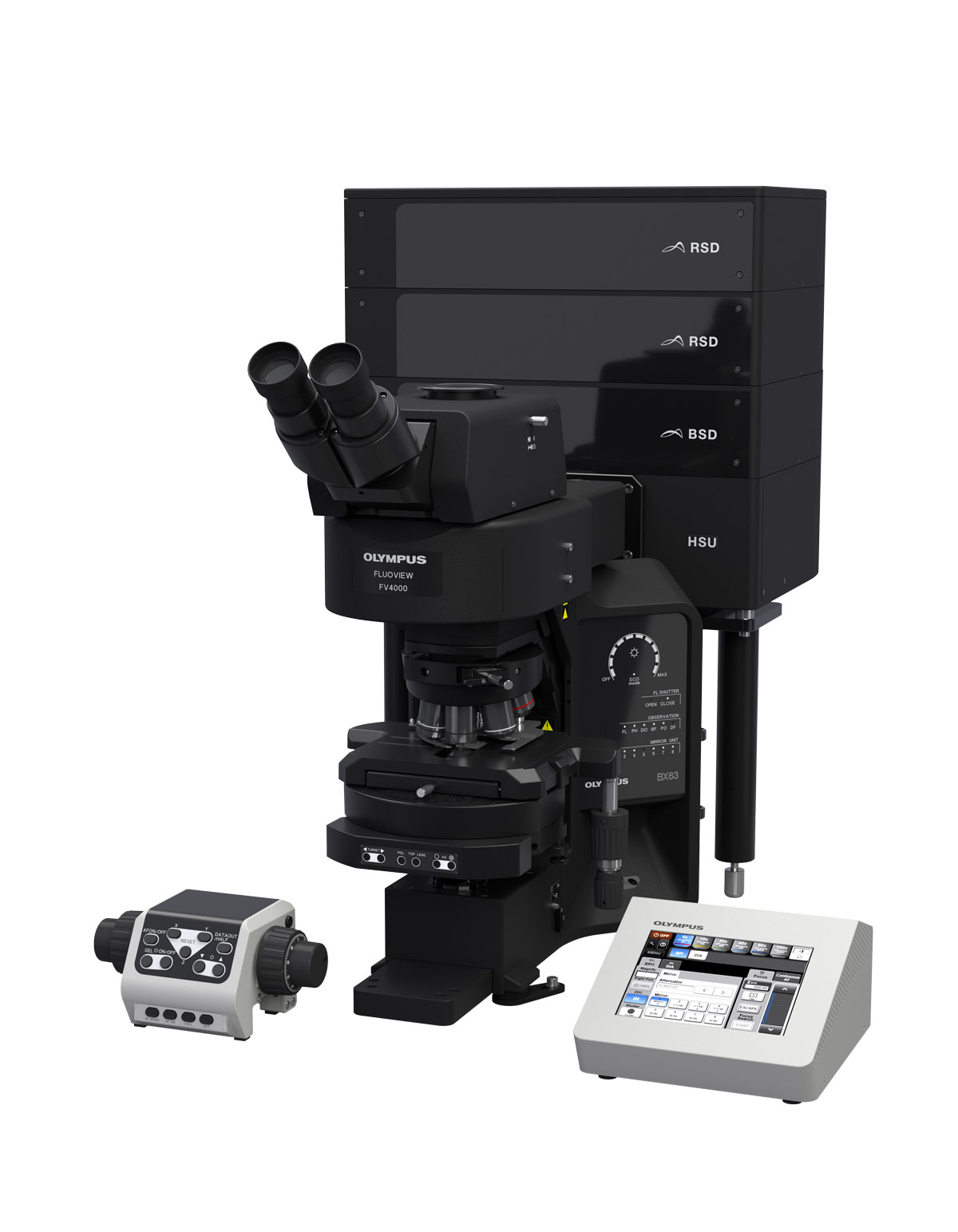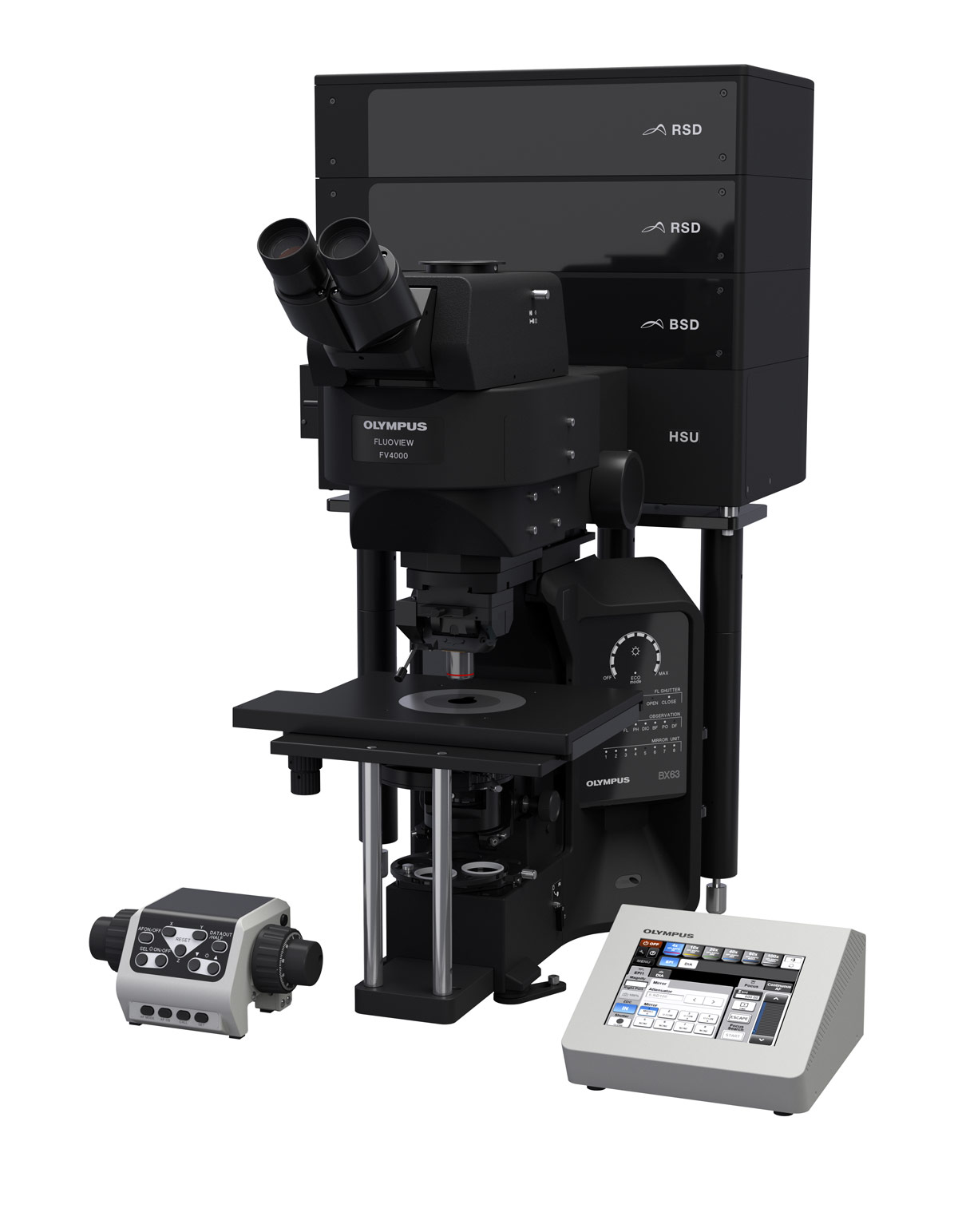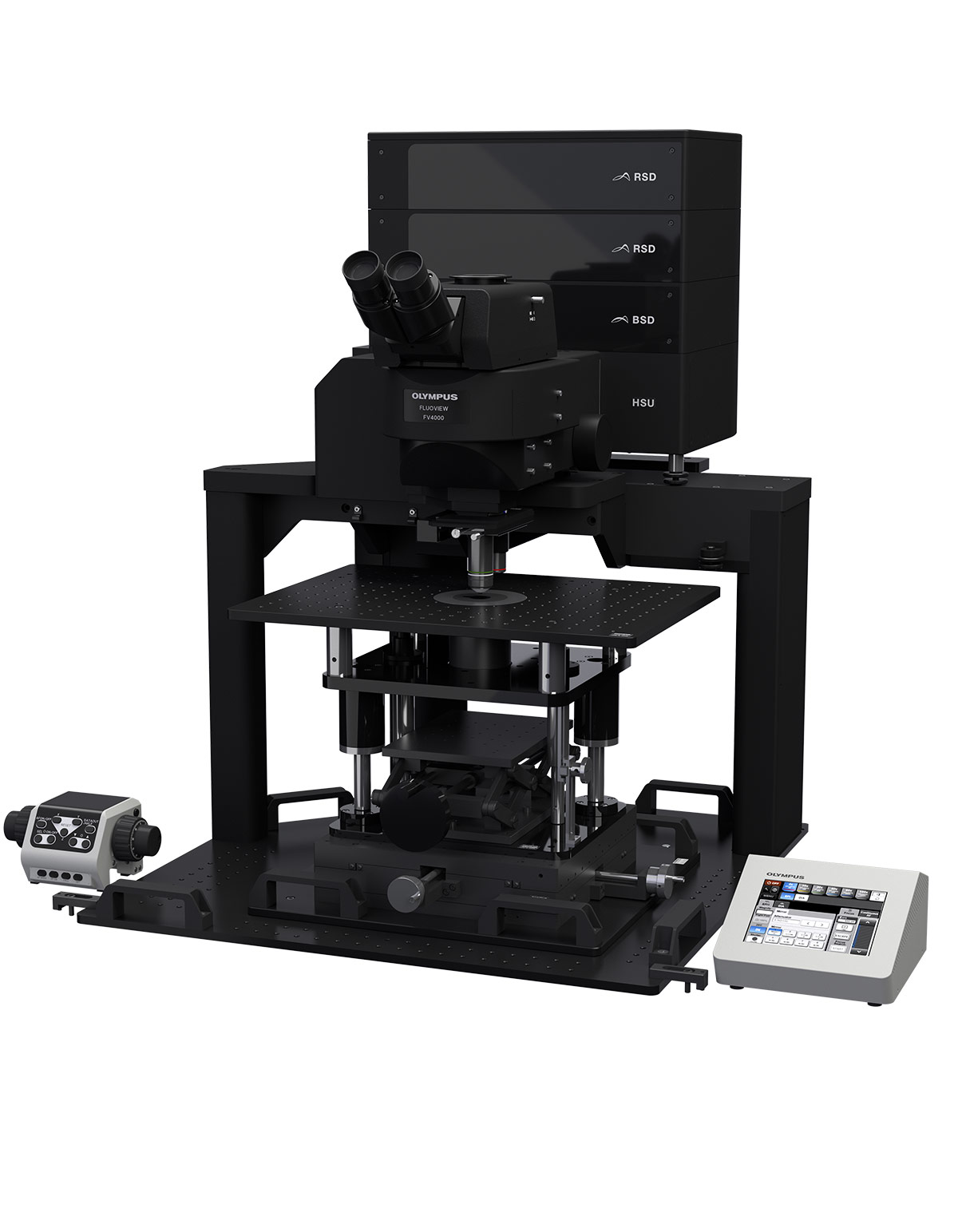Not Available in Your Country
Sorry, this page is not
available in your country.
- Overview
- Applied Technologies
- AI Solutions for Confocal Microscopy
- Configurations
- Specifications
- Resources
Overview
Transforming Precision ImagingOur more than 100 years of optical expertise have led to the FV4000 microscope—a technological breakthrough that delivers profound image quality with the potential to change what you’re able to see and empower your research. |
 |
|
|---|
|
Breakthrough SilVIR™ Detector Technology: The New Gold StandardOur advanced, silicon-based SilVIR™ detector makes it easier than ever to acquire precise, reproducible data. The detector combines two advanced technologies—a silicon photomultiplier (SiPM) and our patented* fast signal processing design.
*Patent number US11237047
|
Neurofilament-heavy chain (NFH) in green, myelin basic protein (MBP) in red, glutathione S-transferase pi 1 (GSTpi) in blue. Mouse cerebellum captured with a UPLXAPO40X objective.
|
|
|
The histogram on the image captured using the SilVIR detector shows a discrete pattern where the intensity can be converted to the photon number. The detector’s fluorescence intensity can be quantified as the photon number, and the background level is extremely low. | |
|
More Information from Your Confocal ImagesThe system’s updated TruSpectral technology combined with high sensitivity SilVIR detectors enable you to see more by making it possible to multiplex an industry-leading six channels simultaneously*. *As of October 2023.
|
Easily Adapts to Changing Research NeedsOur FV applications are unique solutions available for the FV4000 microscope that provide outstanding value and flexibility.
| ||||
Gentler High-Speed Time-Lapse Confocal Imaging | |
Related VideosHeLa cells labeled by MitoView 720. XYZT imaging by 1K resonant scanner for 30 min. | Time-lapse imaging is easier with smart features:
|
Reproducible Image Data Between Users and SystemsThe SilVIR detector has less sensitivity loss over time compared to previous-generation detector technologies. With our laser power monitor (LPM) and TruFocus™ Z-drift compensator, achieve reproducible images under consistent conditions. Different users on different days can acquire the same precise images using the same settings. Even the images acquired by different FV4000 microscopes can be compared and discussed using the same photon number intensity scale. To further enhance reproducibility, the Microscope Performance Monitor makes it easy to check the system’s laser power, detection sensitivity, and optical performance, helping ensure that your FV4000 microscope is functioning at a consistent and high level. |
Driving the Future of High-End Imaging ResearchWe designed the FV4000 microscope to benefit everyone who uses it—from the core facility manager to individual users sitting at the scope and running imaging experiments. Core Facility Managers
PI and Group Leaders
Individual Users
|
Microscope Support and Service You Can Count OnWe designed the FV4000 system to be easy to maintain:
We stand behind our products with a commitment to fast service and technical support. We offer various support plans to keep your microscope running at peak performance at a predictable cost as well as remote support options, so you don’t need to wait for an engineer or specialist to visit if you’re having an issue.
|
Need assistance? |
Applied Technologies
See Further with NIR-Enabled Confocal MicroscopyNear-infrared (NIR) imaging is fully integrated into the FV4000, and all detectors work through the NIR range so that you can maximize the benefits of this imaging technique:
|
Award-Winning Technology for Award-Winning ResearchThe FV4000 system's optical elements have a high transmission from 400 nm to 1300 nm, including the galvanometer and resonant scanner, which are coated in silver rather than aluminum. Our award-winning X Line™ objectives are corrected for chromatic aberrations between 400–1000 nm. They also have a higher numerical aperture, excellent flatness, and very high transmittance from UV to NIR, increasing the multiplexing capabilities. For improved colocalization reliability, our specialized A Line™ (PLAPON60XOSC2) oil immersion objective (ne~1.40) significantly minimizes chromatic aberration for strict colocalization analysis. |
|
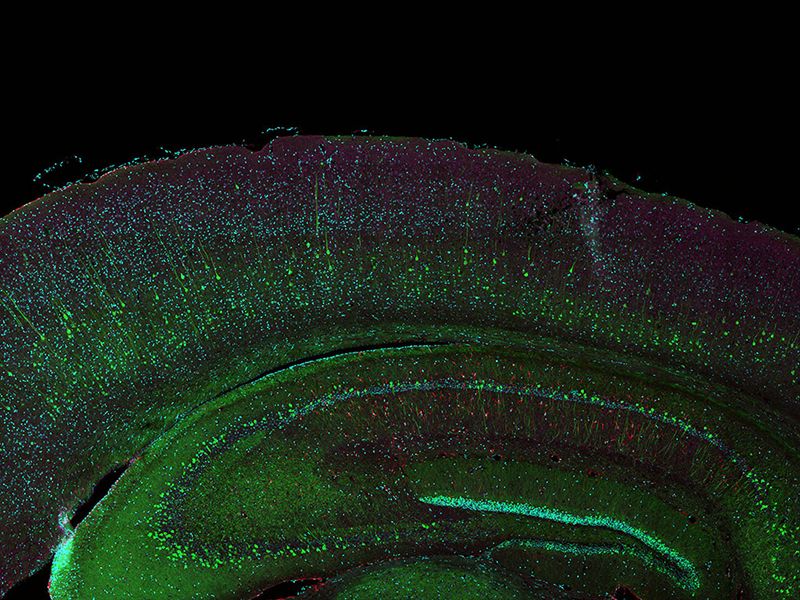  A total of 77 four-channel XYZ positions (11 × 7) were acquired using a 1K resonant scanner within 16 minutes to create the stitched image, which used to require 2 hours using a galvanometer scanner. The coronal section of an H-line mouse brain, cyan; DAPI (cell nuclei), green; YFP (neuron), yellow; Cy3 astrocytes, magenta; AlexaFluor 750 (microtubule). Sample courtesy of: Takako Kogure and Atsushi Miyawaki, Cell Function Dynamics, RIKEN CBS. | Higher-Quality Images Up to 60 Times Faster than the FV3000A unique combination of technologies delivers high-quality images up to 60 times faster than the FV3000 microscope.
|
|---|
8x Faster Super Resolution Imaging*The FV4000 microscope enables you to capture macro to micro to super resolution images with no additional hardware.
*Compared to the FV3000. |  Confocal mode 1 AU (left) versus super resolution mode (right) |
Unlock Deeper Insights with High-Resolution 3D Imaging | |
Related VideosHeLa cell spheroid labeled by DAPI (cyan, cell nuclei) and AlexaFluor790 (magenta, Ki-67). Imaging of the spheroid’s whole volume was possible by NIR 785 nm, although only surface area cell nuclei observation was possible using a 405 nm laser. | Quickly and easily capture high-resolution 3D images of thick samples. Maximize Depth, Time, and Image Quality
|
Precise Dynamics of Live Cells with Less Damage
|
Clear Images at DepthUse our silicone immersion objectives with the FV4000 microscope and achieve clear images of features and structures deep within your sample. Silicone oil has a refractive index close to that of live cells or tissue, greatly reducing the spherical aberration as compared to air, water, or other oils. With less aberration, you can achieve clearer images of your sample at depth. And silicone immersion oil does not dry out at 37 ℃ (98.6 °F), making it effective for long-term time-lapse imaging. | Related Videos |
Need assistance? |
AI Solutions for Confocal Microscopy
Stunning, Data-Rich Images in Less Time and with Less EffortGet better images in less time and with less effort. TruAI™ denoise technology takes the already low-noise images from the FV4000 and reduces noise to ultra-low limits for stunning, data-rich resonant images. To speed up image analysis, you can pretrain an AI model so that the system can automatically segment your image data, greatly reducing the workload of this often time-consuming manual process. Then, TruAI technology further streamlines the analysis so that you can get your data quickly. |
Where Innovation Meets Imaging ExcellenceImprove your resonant scanner image quality by incorporating TruAI noise reduction. Although resonant scanner images are effective in capturing cellular dynamics at high speeds with low damage, this usually causes a compromise in the S/N ratio. TruAI noise reduction can improve these images without sacrificing time resolution using pre-trained neural networks based on the noise pattern of the SilVIR™ detectors. These pre-trained TruAI noise reduction algorithms can be used for on-the-fly processing as well as post processing. | |
 Processed with TruAI noise reduction (right) Brain sample: coronal section (50 μm) of a mouse brain stained with DAPI (nuclei, cyan), GFAP (astrocytes, green/488), MAP2 (microtubule-associated protein 2, neurons, and dendritic processes, cyan/647) and MBP (myelin basic protein, red/568). Sample courtesy of: Sample preparation Alexia Ferrand; sample acquisition Sara R. Roig and Alexia Ferrand. Imaging Core Facility, Biozentrum, University of Basel. |  Processed with TruAI noise reduction (right) HeLa cell mitochondria labeled by MitoView 720 acquired using a 1K resonant scanner. The maximum photon number was 3 photons. |
Faster, Easier Image AnalysisImage analysis requires data extraction using segmentation techniques based on intensity value thresholds. However, this can be time-consuming and is affected by the sample conditions. TruAI image segmentation using deep learning helps streamline image processing and minimize sample variables for more accurate image analysis. It enables you to segment superior performance with weak fluorescence fluorescence images or tissues that are usually difficult to extract using the simple thresholding method. |  TruAI detects the glomeruli features (right) |
Need assistance? |
Configurations
The FV4000 microscope is engineered to be modular, making it easy for you to configure the system based on your applications and budget. You can start with a standard FV4000 and easily upgrade to multiphoton imaging by adding the MPE module as your research changes.
| ||||||||
Need assistance? |
Specifications
| Scanner |
Galvanometer scanner
(normal imaging) | 64 × 64 to 4096 × 4096 pixels, 1 μs/pixel–1000 μs/pixel | |
|---|---|---|---|
|
Resonant scanner scanner
(high-speed imaging) | 512 × 512 pixels, 1024 × 1024 pixels | ||
| Field number (FN) | 20 | ||
| Spectral confocal detector | Detector | SilVIR detector (cooled SiPM, broadband type/red-shifted type) | |
| Maximum channels | Six channels | ||
| Spectral method | VPH, detectable wavelength range 400 nm–900 nm | ||
| Laser | VIS laser | 405 nm, 445 nm, 488 nm, 514 nm, 561 nm, 594 nm, 640 nm | |
| NIR laser | 685 nm, 730 nm, 785 nm | ||
| Laser power monitor | Built in | ||
| Image | High dynamic range photon counting (1G cps, 16-bit) | ||
